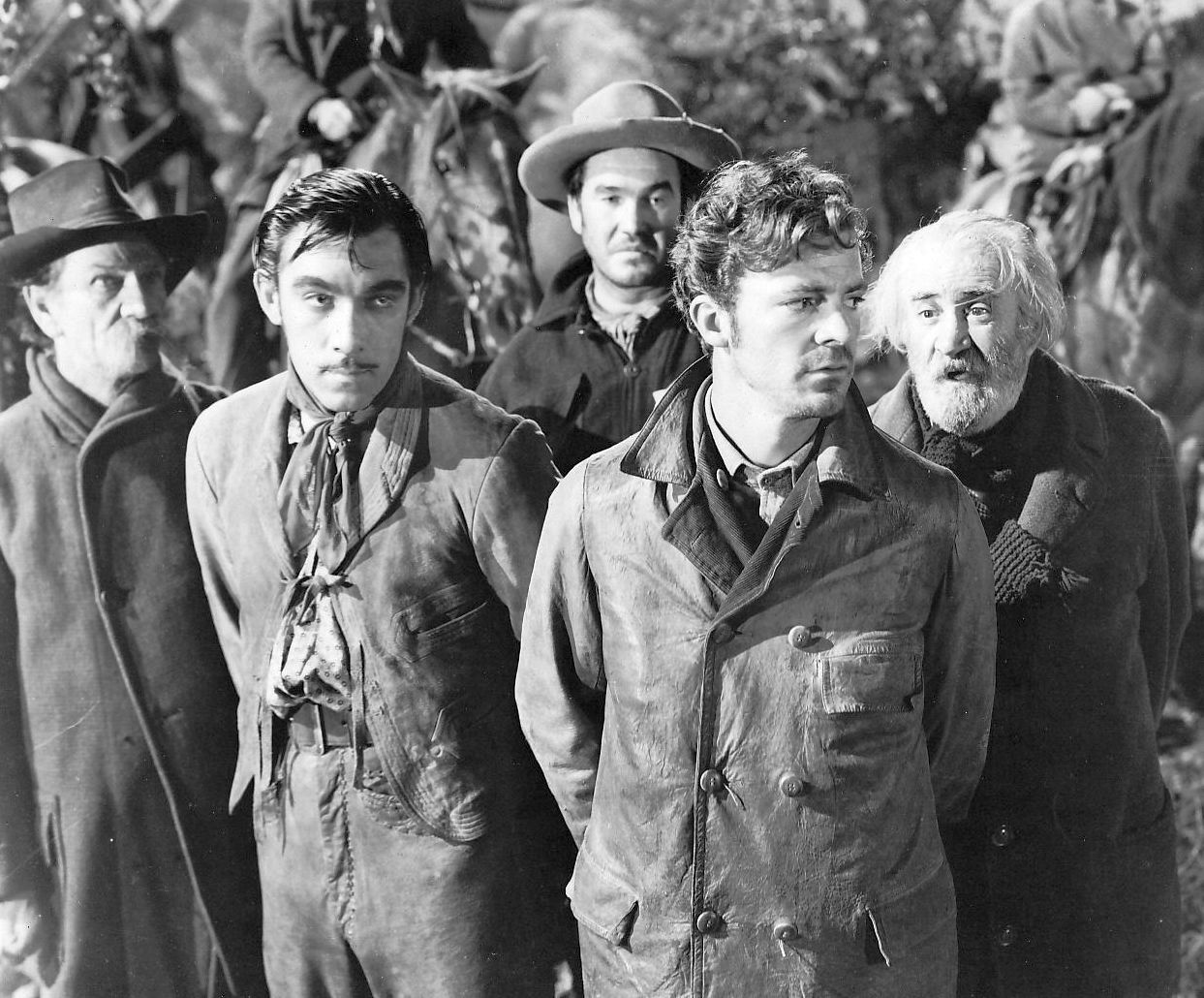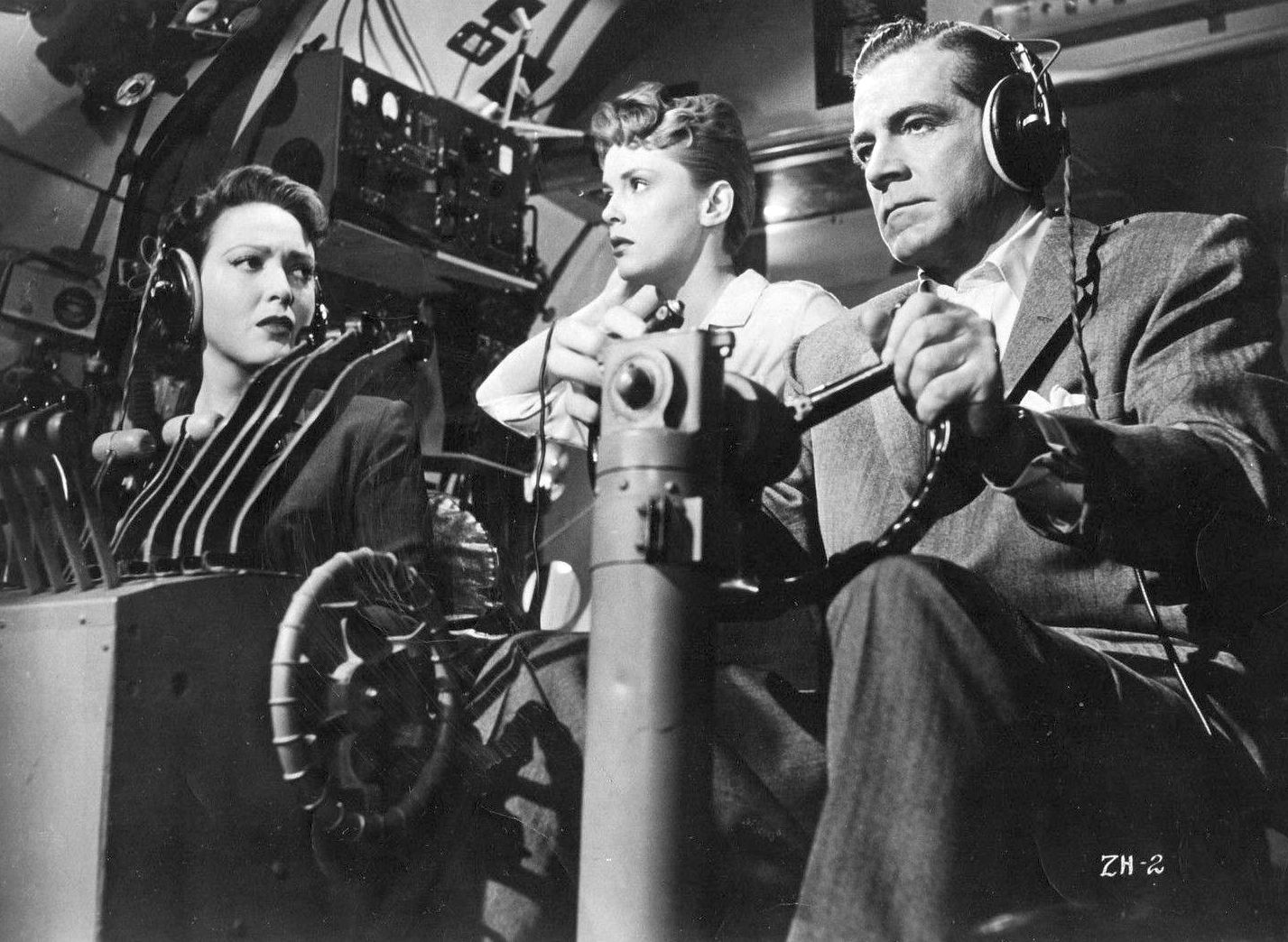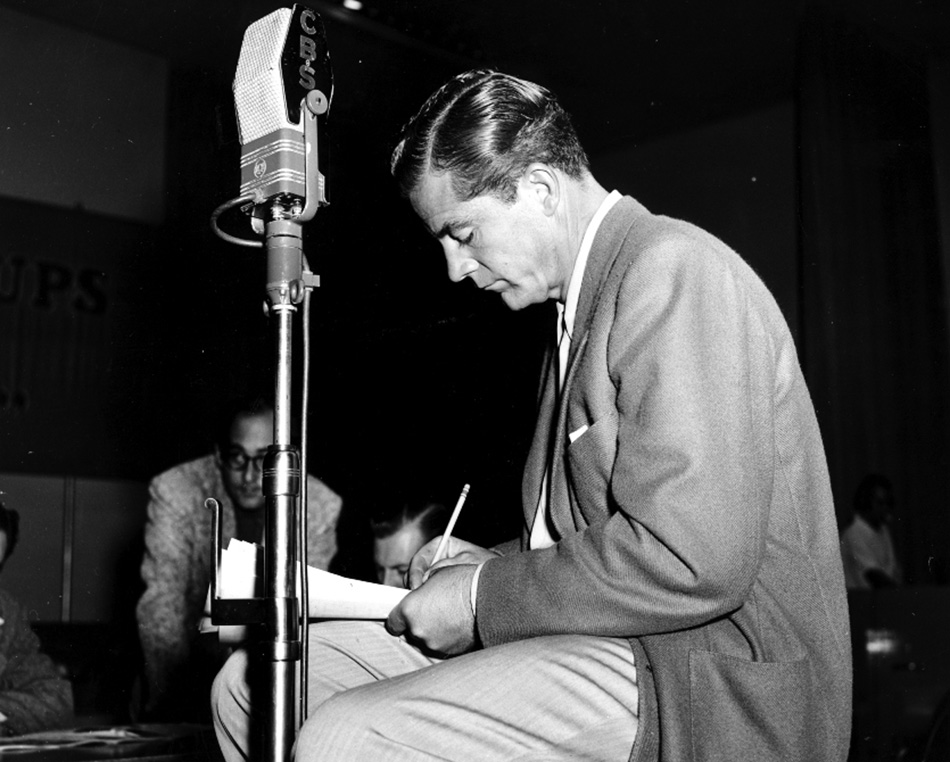Happy Birthday, Dana Andrews!
Posted by Ivan G. Shreve, Jr. on Jan 1st 2017
Author Carl Rollyson’s 2012 biography of actor Dana Andrews—born Carver Dana Andrews on this date in 1909—is titled Hollywood Enigma. For many folks in the motion picture industry, including producers Samuel Goldwyn and Darryl F. Zanuck, Andrews was just that. Rollyson notes that “his heroes seemed conflicted” and that “they were holding back something, as if they did not quite trust themselves in the heroic roles assigned to them.” Dana’s diffident, almost minimalist style of acting has been dismissed by any number of movie critics as “wooden”—but anyone who’s ever sampled the man’s extensive film, television, and radio work knows that there was much more to Dana Andrews than meets the eye.
It’s a mystery as to how Dana Andrews ever aspired to an acting career in the first place. He spent his early years in and around Texas (though his birthplace was a Mississippi town that humorously decided to call itself “Don’t”—as in Don’t, Miss.). Andrews’ father, Charles Forrest Andrews, was a Baptist minister who organized campaigns not only against the wickedness in the motion picture industry…but the evils of alcohol as well. (Ironically, Dana struggled with alcoholism for most of his adult life, which didn’t help his career as he became older.) At the age of ten, young Dana began surreptitiously spending time at the movies. (He wasn’t the only member of his family—which numbered thirteen children—to pursue acting…his younger brother is Steve Forrest.) Dana attended Sam Houston State University and studied business administration; after graduation, he began working as an accountant for Gulf Oil. However, he could not tamp down his acting ambitions and, against the wishes of his family, moved to California in 1931 to focus on his career.
Dana would become a member of the prestigious Pasadena Playhouse while working at a variety of odd jobs including bus driver, ditch digger, and gas station attendant. (Andrews also studied opera—he had a fine singing voice—something to which his family might have been more amenable as a vocation.) Spotted by a talent scout working for independent film producer Sam Goldwyn in 1938, Dana would make his movie debut in a Cisco Kid western for 20th Century-Fox in 1940 (Fox bought half his contract from Goldwyn), Lucky Cisco Kid. While Fox used Andrews as a supporting player in films like Kit Carson (1940), Tobacco Road (1941), and Swamp Water (1941), producer Goldwyn availed himself of Dana’s talents in vehicles like The Westerner (1940) and Ball of Fire (1941).

One of Dana Andrews’ most important early movie assignments was in Fox’s The Ox-Bow Incident (1943), an underrated Henry Fonda western in which Dana plays one of three men accused of cattle rustling…and a mob thirsting for vengeance decides to take the law into their own hands by lynching them for their crime. Incident would lay the groundwork for the movie that made Andrews a star—the classic film noir Laura (1944), in which he plays a detective investigating the homicide of a famous model played by Gene Tierney. Laura was the third movie to feature Dana and Gene (1941’s Belle Starr and the previously mentioned Tobacco Road were the first two); they would later team up for two additional motion pictures in The Iron Curtain (1948) and Where the Sidewalk Ends (1950—directed by Otto Preminger, who also helmed Laura). Laura also established the actor’s noir bona fides; Dana would later appear in Fallen Angel (1945), Boomerang! (1947), Daisy Kenyon (1947), While the City Sleeps (1956), and Beyond a Reasonable Doubt (1956).
Dana also had a plum acting role in The Best Years of Our Lives, the Best Picture Oscar winner of 1946, as a former Army bombardier struggling to re-adjust to civilian life after WW2. There was something about Andrews that made him an ideal fit to portray military men in the movies; his lengthy resume includes Crash Dive (1943), The Purple Heart (1944), Wing and a Prayer (1944), and A Walk in the Sun (1945). The actor played a lot of “fly-boys” in later movies as well, notably Zero Hour! (1957—the film that would later be satirized as Airplane!), The Crowded Sky (1960), and Airport 1975 (1974). His movie fame also insured that Andrews would reprise many of these parts on radio in addition to original productions on various dramatic anthologies: The Cavalcade of America, Family Theatre, The General Electric Theatre, Hallmark Playhouse, Hollywood Sound Stage, Hollywood Star Playhouse, The Lady Esther Screen Guild Theatre, The Lux Radio Theatre, Screen Directors’ Playhouse, and Suspense.
Dana Andrews’ major contribution to radio came about as many big-name motion picture stars were being lured to microphones in the late 1940s/early 1950s via the magnetic tape revolution; programs could be recorded in advance and not interfere with a movie actor’s busy shooting schedule. Dana starred in a syndicated series for Ziv entitled I Was a Communist for the F.B.I., broadcast in 1952-53 over 78 episodes. It was based on a best-selling book by Matt Cvetic, an Everyman who had managed to infiltrate his local chapter of the Communist Party and tattle on their activities to J. Edgar Hoover’s boys as an undercover agent. (It was important for Cvetic to maintain the fiction that he was a Red…which I’m sure made Thanksgiving dinners with his family a treat.) Communist had originally been adapted to the big screen in 1951 with radio veteran Frank Lovejoy as Cvetic; both the movie and radio series remain artifacts of the Cold War era, but at the time it was a major showcase for Dana’s radio skills (he would memorably close the program in the style of one of his film noir heroes: “I was a Communist…a Communist for the F.B.I…I walk alone…”).

Dana Andrews continued to work in films in the 50s and 60s…though his movie roles weren’t quite as stellar as the fame he enjoyed in the early stages of his cinematic career. He’d occasionally strike gold with vehicles like Night of the Demon (1957), a classic in the horror movie genre, and he appeared in eight films in 1965 alone, including In Harm’s Way, The Satan Bug, and The Loved One.1965 was the year that Dana’s two-year stint as president of the Screen Actors’ Guild came to an end. His film appearances became limited to mostly B-flicks like The Frozen Dead (1966) and Hot Rods to Hell (1967), so Andrews branched out to jobs on the small screen with guest appearances on TV favorites like Checkmate, The Twilight Zone, Ben Casey, and Family Affair.From 1969 to 1971, Dana starred as Thomas Boswell, the president of fictional Bancroft College on the daytime drama Bright Promise.
Andrews won his battle with the bottle in 1970 and began a second career performing in dinner theatre alongside his wife, actress Mary Todd. (The actor would appear in a televised public service announcement in 1972 on behalf of the National Council on Alcoholism and Drug Dependence.) But he continued to work steadily on TV and in movies, guest starring in episodes of Night Gallery and Ironside, and making a memorable impression as a movie director (“Red Ridingwood”) in 1976’s The Last Tycoon. Dana’s last appearance onscreen was in the 1984 film Prince Jack (a satirical drama about the JFK administration); he spent his remaining years at Los Alamitos, California’s John Douglas French Center for Alzheimer’s Disease before his passing in 1992 at the age of 83.

Dana Andrews’ signature radio series, I Was a Communist for the F.B.I., is well represented here at Radio Spirits with two broadcasts (“The Party Got Rough” and “Tour of Duty”) on our potpourri collection of secret agents, Great Radio Spies. After these have whetted your appetite, we invite you to delve into more Cold War intrigue with Sleeper, a collection of sixteen episodes from the popular Communist series. Happy birthday to the man once described by fellow film thespian Norman Lloyd as “one of nature’s noblemen”!

